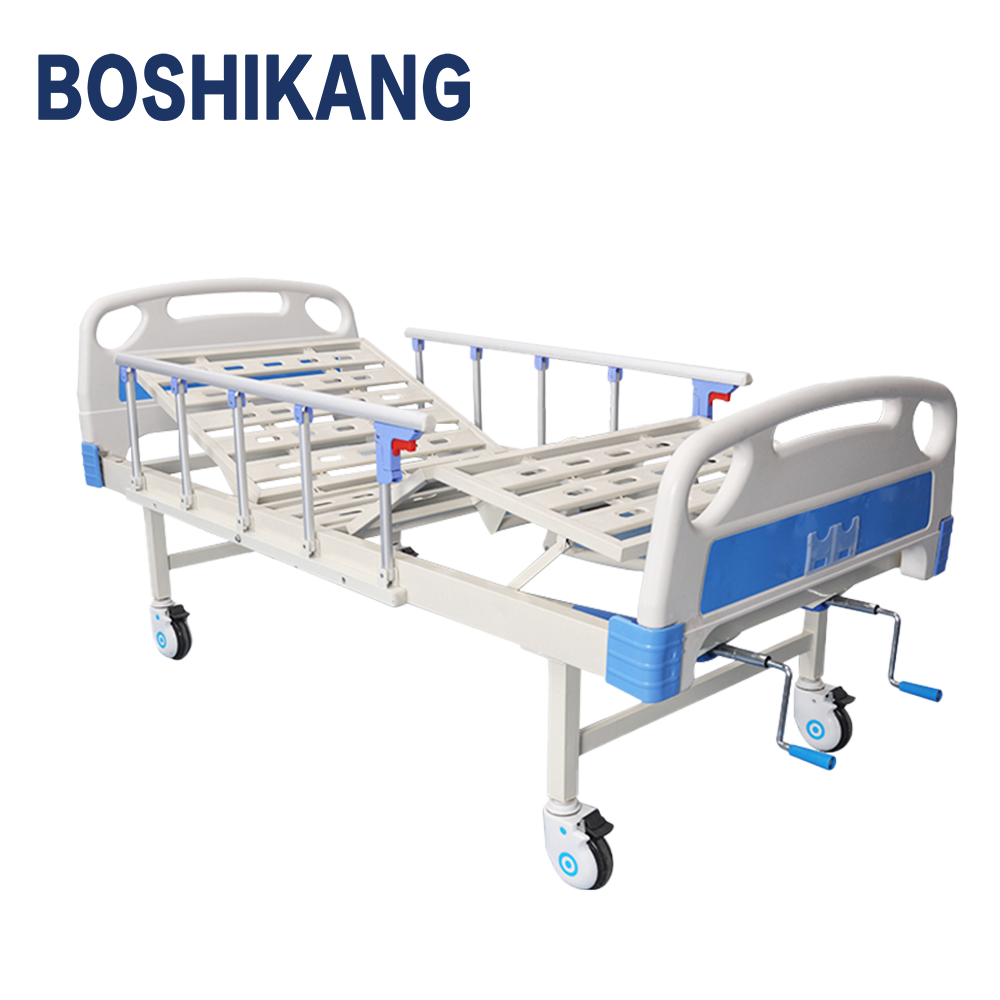Enhanced Patient Comfort and Recovery Outcomes
Pressure Relief for Chronic Pain Management
Another reason why it is good to choose a high quality nursing bed is due to the fact they offer our patients advanced pressure relief features that eliminate bed sores, this is vital for those who suffer with chronic pain. Ratings reflect that use of these beds can help decrease pain by a large margin and likely contribute to a more successful recovery. The memory foam and advanced gel material in the cushions help promote even distribution of weight and improving overall patient comfort. These features, frequently only available in high-end hospital beds, offer critical support for patients who require extended care, so you can see why this bed is an investment in both your loved one’s health and yours.
Adjustable Positioning for Optimal Circulation
Adjustable bed frames give multiple adjustable positions, a critical function to help avoid prophyria problems like (DVT). Studies show that good circulation supported by these beds may lead to increased speed of recovery and shorter hospital stays. The devices for raising and lowering beds can be motorized, so that changes are implemented without exertion, a critical feature for patient and attendant convenience. Comfort and adjustability is not just about your comfort but also a big factor in improving circulation and aiding recovery.
Infection-Resistant Materials for Long-Term Hygiene
Anti-Infection Materials applied in nursing bed have an important role in preventing hospital-acquired infections (HAIs), with a critical affect on patient safety. Healthcare institutions recommend the adoption of such high-quality materials and enhance overall hygiene protocols in patient care facilities. Research evidence shows that the use of antimicrobial coatings lessens microbial colonization on surfaces, and creates a safer environment for patients and personnel. The introduction of these advanced materials into nursing beds is mandatory, as a proactive step in promoting the health and hygiene of the received patients.
Improved Caregiver Efficiency and Reduced Physical Strain
Ergonomic Design for Safer Patient Transfers
Ergonomic shape of the nursing beds ensures safe patient transfer, thus minimising the risk of injury to both the patient and the healthcare staff. Studies have shown that carers are less likely to suffer from musco-skeletal injuries when using good quality beds, which will have a knock-on beneficial effect on moral and productivity. While the use of easy-to-lift side rails and lightweight designs are important to reduce the demand on the caregiver’s musculoskeletal system during transfers, care providers generally attempt to accomplish tasks quickly to save time and minimize physical discomfort. With a focus on the quality and ease of use, this secure solution adapts to ensure safety for any caregiver and positive patron experience.
Time-Saving Features for Daily Care Routines
A nurse's working time These time-saving aspects of nursing beds are a cherished relief especially during the underbough the workdays, which both increases efficiency and benefits the patients as the work is being carried out. Innovations like more streamlined bed control systems for easier positioning of patients, help make routine tasks and patient caretaking that much more efficient.Available around the clock in a caregiver's day. According to surveys, they are well liked by caregivers, who find that they help them use their time more efficiently, which means better care for the patients. The revelation of these intuitive functions accords with today’s drive for efficient healthcare.
Reduced Risk of Caregiver Workplace Injuries
Good nursing beds play an important role in preventing physical strain on the caregivers, thus minimizing the rate of work related injuries. Information from occupational safety agencies supports that when appropriate equipment is involved, there are reduced physical injury rates for caregivers. Investing in reliable beds can help to ensure the health and welfare of caregivers while reducing the potential cost of health care associated with work-related compensation claims for injuries suffered. This investment in nursing infrastructure is a strategic approach for enhancing safety in the workplace and the delivery of care, and lies at the core of sustainable health care.

Safety Enhancements and Fall Prevention Strategies
Integrated Safety Rails for Patient Security
Nursing Bed with Safe rails Safety rails, that are incorporated on nursing beds, are a significant part when it comes to avoid falling, the most common issue in the healthcare area. With a protective shield, these rails play a major role in patient safety. There is strong statistical support that the application of adjustable safety rails can significantly decrease the number of patient falls which can lead to fewer injuries. In addition, patient-friendly rail designs complement a range of patient behaviors and contribute to overall safety, providing peace of mind for caregiver and patient.
Height-Adjustable Bases for Easy Accessibility
Freely adjustable: Height-adjustable elements of nursing beds provide access for nurses and allow them to select the best position. Studies show that beds with variable height options help in easy and smooth movements and minimise the risk of injury to the care giver while handling the patient. Besides helping in transfers, these features help patients participate more in their care. This leads to better outcomes for patients, who become more active and informed participants in their healthcare.
Stable Framing to Prevent Tip-Over Accidents
Secure and sturdy bed frames are crucial to patient safety, as is evident in environments with high patient turnover, such as healthcare institutions. Research shows that providers who use top quality steady nursing beds experience less tip-over accidents and can mitigate safety risks for both patients and staff. For added security the bed is constructed with non-slip feet and wider shaped bases to guarantee stability and avoid accidents. This bias towards steady framing ties with the larger objective of making healthcare safer through dependability and trust.
Reduced Hospital Readmissions Through Better Care
Purchasing quality nursing beds is a strategic decision that also plays a role in reducing hospital readmissions by providing better patient care. Research consistently points out an association between the quality of hospital bedding and increased recovery rates which means that improved bedding leads to better health outcomes. For example, there is evidence that state-of-the-art features of beds support faster healing of patients, which leads to fewer hospital stays. This is advantageous for patients by not interrupting their lives, and for healthcare systems by maximizing resource use. With the purchase of superior beds, health care institutions can dedicate energy to prevention of illnesses rather than repetitive cures.
High-Quality Materials for Extended Lifespan
Durable: Because nursing beds are made from high-quality materials, you can count on a long service life and a cost-effective overall investment. Companies that use quality materials tend to have warranties because they are confident their products will not break. For instance, for a nursing home to invest in long-lasting beds means less maintenance of them, which will save them a lot over a span of time. The statistics are simple really, higher quality bedding means less replacing, which is less cost over time. Although there may be an initial additional cost, the system pays for itself in the long run with less repair and repeated replacement.
Insurance-Compatible Options for Financial Flexibility
Most nursing beds are made specifically to meet insurance criteria, which is a good advantage for all healthcare providers to make wise financial plans. This ease of integration with insurance policies helps to mitigate the high start-up costs and facilitates the adjustability of medical centers to their balance sheets. Considering the insurance-compliantity of these choices, health care executives may further balance their budgets and resources for other important aspects of patient care. When you know all the specifics of coverage – what’s included and what’s not – and have a clear sense of your potential costs – if anything – it's like stepping back from the bill and seeing the whole financial landscape, which helps with decision-making.
FAQs
What are the benefits of nursing beds with memory foam and gel materials?
Nursing beds with memory foam and gel materials offer advanced pressure relief, evenly distributing weight to prevent bed sores and enhance patient comfort.
How do adjustable beds support optimal circulation?
Adjustable beds allow varied positioning options that aid in preventing circulatory issues, contributing to faster and more efficient recovery times.
What impact do antimicrobial coatings have in healthcare settings?
Antimicrobial coatings on nursing beds reduce microbial growth on surfaces, decreasing the risk of hospital-acquired infections and improving patient safety.
How do nursing beds improve caregiver efficiency?
Ergonomic features and time-saving mechanisms in nursing beds help reduce physical strain and facilitate efficient daily routines for caregivers.
Why are integrated safety rails important in nursing beds?
Safety rails are crucial as they prevent falls, ensuring patient security and minimizing injury risks within healthcare environments.
Table of Contents
- Enhanced Patient Comfort and Recovery Outcomes
- Improved Caregiver Efficiency and Reduced Physical Strain
- Safety Enhancements and Fall Prevention Strategies
- Reduced Hospital Readmissions Through Better Care
-
FAQs
- What are the benefits of nursing beds with memory foam and gel materials?
- How do adjustable beds support optimal circulation?
- What impact do antimicrobial coatings have in healthcare settings?
- How do nursing beds improve caregiver efficiency?
- Why are integrated safety rails important in nursing beds?


